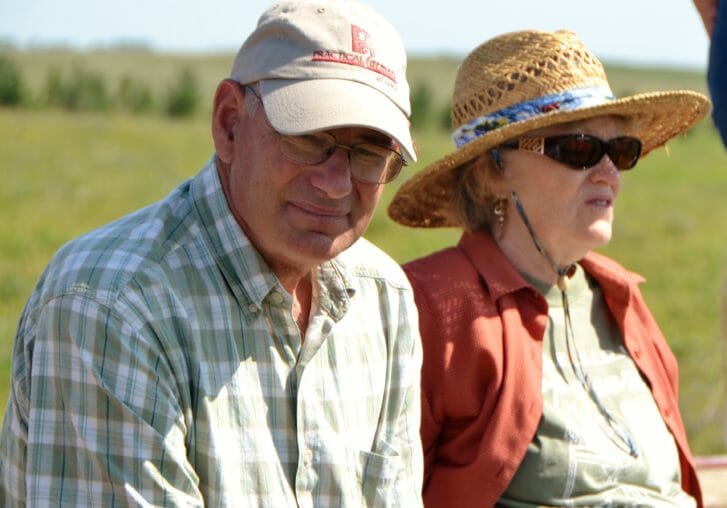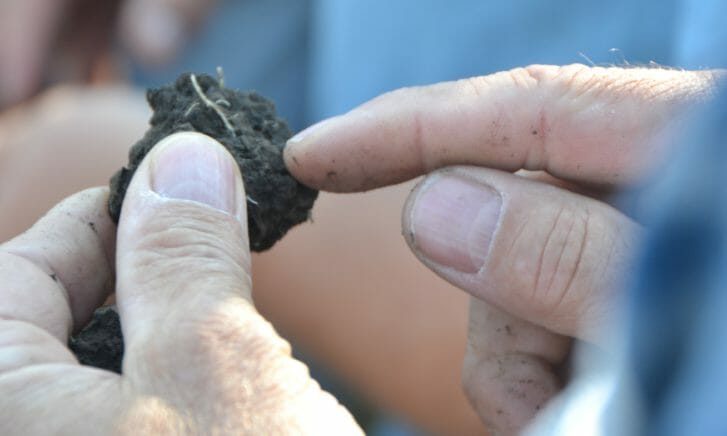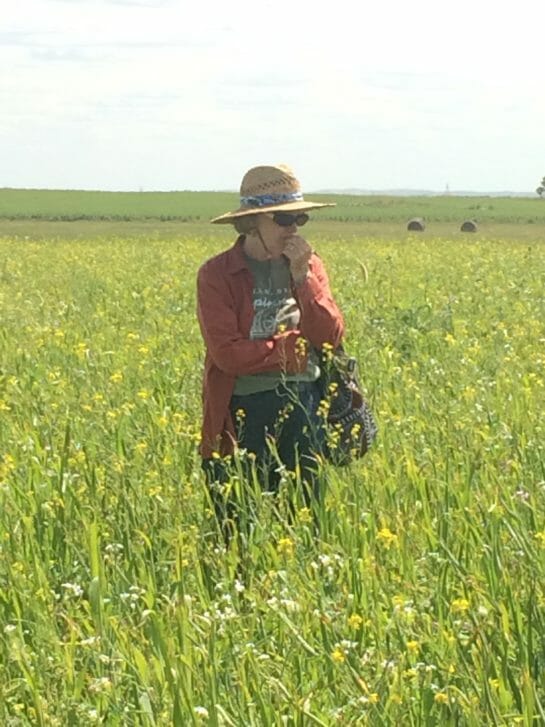Guest Blog: Reminiscing about North Dakota
A group of 43 farmers traveled to North Dakota last August to spend a day with Gabe Brown. The group spent the next day with Jay Fuhrer, North Dakota’s Soil Health Specialist, visiting several farms and ranches in Burleigh County, ND. Soil health was the central theme, and PFI president Dan Wilson, reflected on his experience while sitting in the combine this fall.
See It to Believe It
It has been almost three months since PFI organized a trip to North Dakota to see what Gabe Brown and others are doing to dramatically improve their soil health. I have been thinking more about soil health since attending Elaine Ingham’s workshop and hearing Gabe Brown speak at PFI’s Annual Conference. In fact, every time I’ve tilled, walked or driven across my soil I’ve ask myself “is this helping or hurting my soil biology?”
I am very much a visual learner so when my wife heard about the trip to see Gabe Brown’s Ranch, she said “Dan, we have to go!” After several obstacles were overcome, we were on our way to North Dakota. As we approached Gabe’s place, I was impressed with how different his place looked from the rest of his neighbors’ ranches.
Gabe walked us into his fields to feel and smell his soil. That was a life changing moment for me, as I realized this was what I wanted my soil to feel and smell like. We then saw two crops growing together in the same field, which is something that I have been thinking about since hearing Gabe speak. Seeing it convinced me that this is something we need to try in Iowa. Walking into one of his multi species cover crop fields and experiencing all of the different plants surrounding us was just awesome. By the end of the day my mind was on overload.
Adaptation
The next day with Jay Fuhrer, we witnessed crops growing on the Menoken Research Farm, where they receive very little rainfall. By paying attention to their soil health, they are able to grow diverse species. I found myself thinking, “considering we have better soil and much more rainfall in Iowa, what can we grow in our soil?” Again, my mind was on overload.
I knew when we arrived in North Dakota that we could not copy what they are doing, but needed to look for systems and techniques that we could take home and adapt to our climate and our way of farming. It did not take Gabe long to convince me that no-till was the way we needed to go with our crops. It was also easy to see that we had not begun to use as many species in our cover crop mixes as we could.
Action Steps
So, over the last few months I have spent a lot of time thinking about what changes to make and where we need to go from here. Abe Collins is another man that I have been following. He has been working on building organic matter in a much wetter climate than North Dakota. We have decided that we need to take ideas from both of these men.
Our first step is going to be to change our crop rotation to a longer rotation. The new rotation will be a corn-bean-small grain-hay-hay rotation. This rotation will give us less than fifty percent of our rotated acres in corn and beans. To gain more income from this rotation, we will add cattle to our beef and dairy herds. We may increase the sheep flock as well. Just by going to this rotation we will have three years without any tillage. We will plant multi-species cover crops in our corn and soybeans, and lastly, we will try to cut out tillage any place we can. Our ultimate goal is to become a no-till, organic operation.
I might have seven to ten years left in my farming career, so will we be completely no-till in my farming career? I do not know if we can accomplish this goal in the next ten years, but we will try. If we do not get there, then the next generation will have to carry on after me.



